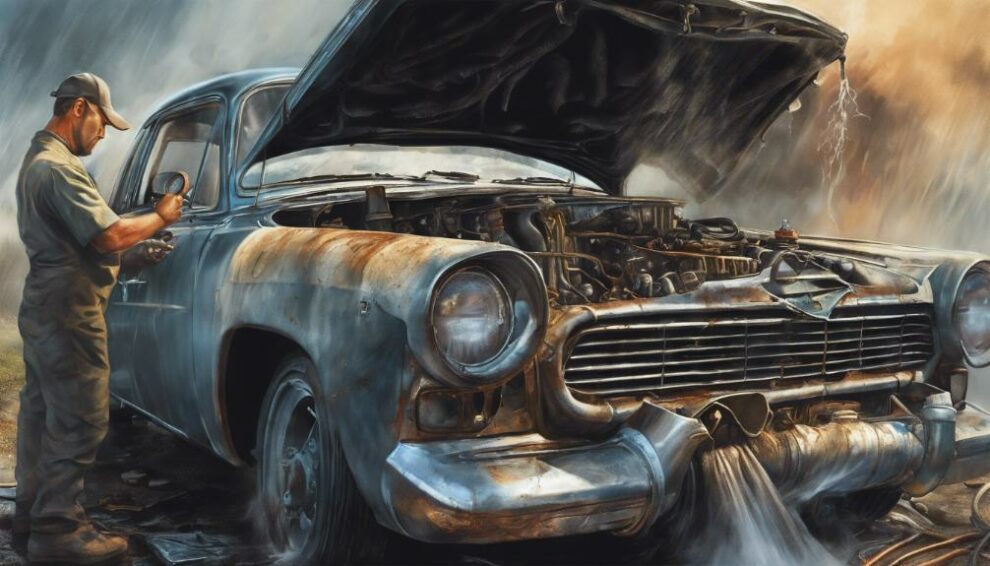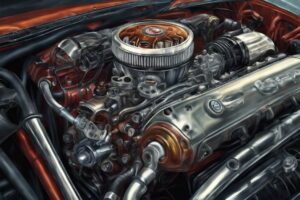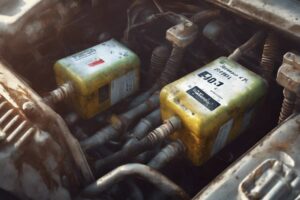Inspect your radiator hoses for visible cracks signaling potential leaks and overheating. Furthermore, watch for bulging or swelling, hindering coolant flow.
Puddles of colorful liquid under the car indicate leaks, which can lead to engine damage. Check for spongy or soft textures that may indicate internal hose damage, affecting cooling efficiency.
Stiff or brittle hoses compromise coolant flow and cooling ability. In addition, abnormal hose temperatures may signify system issues like blockages. Regular inspection and prompt replacement are vital.
Recognizing these signs promptly guarantees excellent radiator health and prevents costly repairs, safeguarding your vehicle’s performance.
Key Points
- Visible cracks indicate potential hose failure.
- Bulging or swelling hoses impede coolant flow.
- Leaks under the car signal hose damage.
- Spongy texture suggests internal hose damage.
- Brittle hoses may lead to cracks and leaks.
Visible Cracks on the Hose
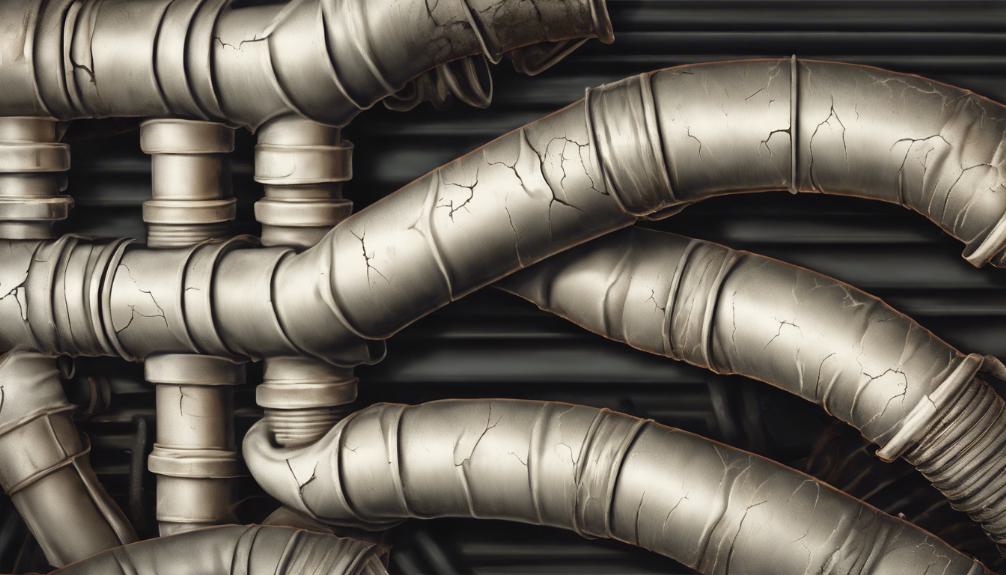
If you notice visible cracks on your radiator hose, it’s important to address them promptly to prevent potential coolant leaks and engine overheating. To detect cracks early, regular inspections are essential.
Crack detection methods include visually inspecting the hose for any signs of damage. Look for any fissures, breaks, or splits in the hose that could indicate structural damage.
Preventive maintenance strategies involve checking the hose for cracks caused by age, wear and tear, or exposure to extreme temperatures.
Bulging or Swelling Hoses
Inspect your radiator hoses for bulging or swelling, as these signs can indicate internal damage or weakening that may compromise their functionality.
Bulging or swelling hoses are a clear indication of potential issues within the hose structure.
Proactive maintenance is key in guaranteeing your hoses are in good condition.
Visible signs of softness, swelling, or bulging suggest internal damage that can lead to weakness and hinder the flow of coolant through the system.
Hoses should ideally maintain a firm structure without any signs of bulging or swelling to function effectively. Troubleshooting tips include regularly checking the hoses for any abnormal signs.
Early detection of bulging or swelling through routine inspections can help prevent more severe issues down the line.
Leaks Present on the Hoses
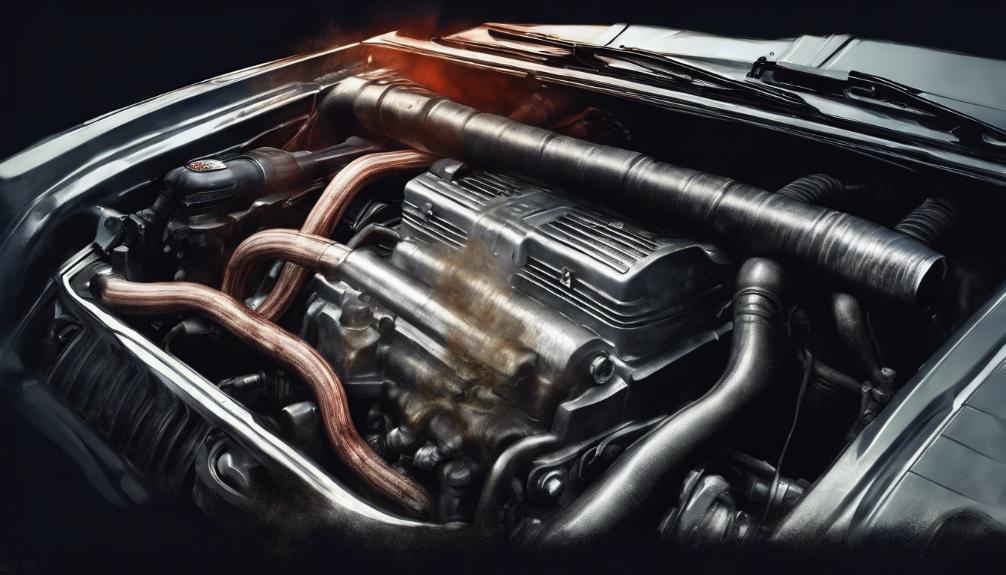
Leaks on your radiator hoses are a clear indication of potential damage or deterioration that should be addressed promptly.
When you notice puddles of colorful liquid under your car, it may suggest that your hoses are leaking. These leaks can lead to coolant loss and engine overheating, so it’s important to act swiftly.
Repairing or replacing the damaged hoses is necessary to maintain the health of your radiator system. Regularly inspecting your hoses for signs of leaks is a simple maintenance tip that can help you catch problems early.
Spongy or Soft Hose Texture
When checking the health of your radiator hoses, pay attention to the texture, as a spongy or soft feel could indicate internal damage or weakening.
A soft hose texture is a concerning sign as it suggests potential issues such as internal damage or deterioration. Squeezing the hose gently can help you determine if it feels spongy or soft.
Inspect for cracks along the length of the hose, as these can contribute to the softness.
Softness in the hose can lead to coolant leaks and potential overheating problems in your vehicle. If the hose feels spongy or soft, it may have lost its firmness and structural integrity.
Soft or spongy hoses should be promptly replaced to guarantee the proper functioning of the cooling system.
Check for brittleness as well, as this can also indicate a weakening hose that needs attention to prevent more severe issues down the line.
What Are Common Signs That a Saab 9-3 Needs a Radiator Hose Replacement?
If you have saab 93 reliability concerns, be on the lookout for signs that your Saab 9-3 needs a radiator hose replacement. Common indicators include coolant leaks, engine overheating, and visible wear and tear on the hoses. Be proactive and address these issues promptly to avoid more serious problems down the road.
Brittle or Stiff Hoses
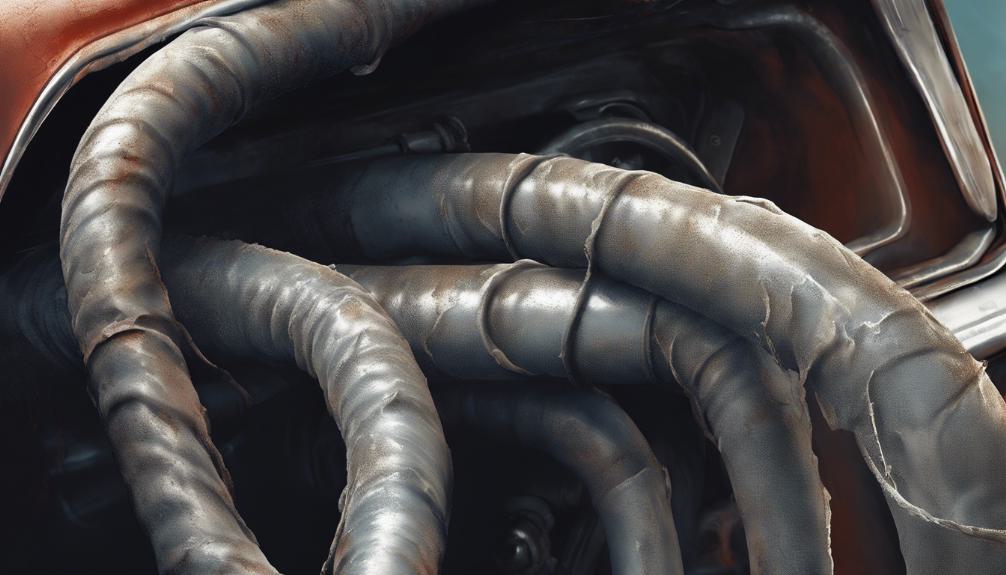
Old hoses that have become brittle or stiff may indicate age-related deterioration, potentially leading to cracks and leaks. When hoses lose their flexibility and become stiff, the coolant flow and engine cooling can be compromised.
Exposure to high temperatures and chemicals can cause hoses, regardless of the material, to harden over time. Brittle hoses are more likely to fail under pressure, increasing the risk of engine overheating.
Regularly inspecting hoses for stiffness can help prevent unexpected failures and costly repairs. To maintain hose health, follow these maintenance tips:
- Check hoses for stiffness regularly, especially after exposure to extreme temperatures.
- Consider replacing old hoses proactively to avoid potential damage.
- Use hose materials suitable for your vehicle’s cooling system requirements.
- Ensure proper installation to prevent kinks or bends that could lead to stiffness.
- Follow manufacturer recommendations for hose maintenance schedules to prolong their lifespan.
Abnormal Temperature of Hoses
If you notice unusually high temperatures in your radiator hoses, it could be a sign of underlying coolant system issues.
Radiator hoses should feel warm but not excessively hot to the touch during normal operation.
Abnormally high temperatures in the hoses can indicate problems like coolant blockages or restricted flow.
Coolant flowing through the hoses is vital for regulating engine temperature, making monitoring hose warmth important for ensuring cooling system efficiency.
A significant temperature difference between the upper and lower hoses may suggest radiator or water pump issues that could lead to engine overheating.
Regularly checking hose temperature can help detect potential cooling system problems early on, preventing more severe issues down the line.
Keep an eye on the temperature of your radiator hoses to guarantee your engine stays cool and your cooling system operates efficiently.
As an Amazon Associate we earn from qualifying purchases.







